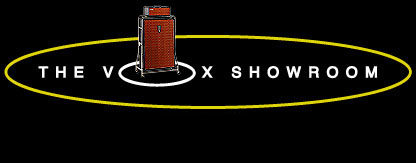 The V304 Jaguar Organ - Divider Distribution
The V304 Jaguar Organ - Divider Distribution
|
As explained on the Jaguar Tone Generator Overview web page, the Jaguar tone generator featured a master oscillator and three serial divider circuits. This circuit arrangement provided four octaves of tones to create the sound of the organ. In contrast, the more expensive Vox Continental Organ had a master oscillator and six serial dividers.
As the Jaguar Organ has four octaves of keys and four octaves of tones, one might think that the tone assignment from the tone generator cards to the keys would be a simple one to one arrangement. This is not the case, and if designed in that fashion, would make the organ tonally bland.
Instead, the Jaguar Organ combined tones from the four available octaves into tonally rich combinations. These tonal layers were assembled inside the tone generator card. Depending on the octave of the key played, the output of the Jaguar tone generator board would combine either two, three, or four tones to form each note.
In contrast, the Continental outputted seven distinct octaves of tones from its tone generators. It then used the distribution wiring bundle to combine tones and assign them to the keys. The Continental also used drawbars to vary the volume of these tones, a feature not included in the Jaguar.
To better understand the concept of layered tones in the Jaguar Organ, you will first need to understand the key names used by Vox, as defined in the V304 factory repair schematic.

Figure 1. Key naming convention for the V304 Jaguar Organ
|
Figure 1 shows that the lowest octave of the Vox Jaguar has keys C2 through B2. This octave has white natural and black sharp keys. This octave not only has organ tones, but it also has bass (pedal tone) keys that may be used separately or in combination with the standard organ tones.
The second octave includes keys C3 through B3. The third octave includes keys C4 through B4, and the fourth octave features keys C5 through C6.
Also notice there is a "grayed out" octave of keys on the right side of Figure 1. This octave of keys represent tones made by the Jaguar Organ tone generator master oscillators that are one octave higher than the actual keys in the organ. These higher tones are used in combination with lower pitched tones to richen the tone of the Jaguar.
Here is how these tones are combined in the Jaguar Organ.

Figure 2. The red arrow points to key F5, which is being played in this example
Figure 2 demonstrates how the tone generator assigns tones to the keyboard. When key F5 is depressed, two tones are combined: the "F" tone from the first divider (1) plus the "F" tone from the master oscillator (M).

Figure 3. Now the red arrow points to key F4, which is being played in this example
Figure 3 demonstrates that when key F4 is depressed, three signals are combined to make the resultant tone: the "F" tone from the first divider (1), the "F" tone from the second divider (2) plus the "F" tone from the master oscillator (M).

Figure 4. Now the red arrow points to key F3, which is being played in this example
Figure 4 demonstrates that when key F3 is depressed, four signals from the tone generator are combined to make the resultant tone: the "F" tone from the first divider (1), the "F" tone from the second divider (2), the "F" tone from the third divider, plus the "F" tone from the master oscillator (M).

Figure 5. Now the red arrow points to key F2, which is being played in this example
Figure 5 demonstrates that when key F2 is depressed, three tones are combined: the "F" tone from the first divider (1), the "F" tone from the second divider (2) and the "F" tone from the third divider.
 |
If you closely examine Figure 4 and Figure 5 above, you will discover that the same divider tones are assigned to F3 in Figure 4 as assigned to F2 in Figure 5. If you made the conclusion that F2 and F3 would play in the same octave, you would be correct. The bass, or "pedal tone" notes must be turned up, using the "Bass Volume" knob on the control panel, to complete the lowest portion of the organ tone for the C2-B2 octave.
|
|
3_Footer

Photos and editorial content courtesy Gary Hahlbeck, North Coast Music
Any and all material presented herein is protected by Copyright.
© 1998 - 2024 The Vox Showroom and North Coast Music, all rights reserved
The images and editorial content in this web site may not be copied or reproduced
in online auction sites such as eBay, Reverb and Craig's List. Sellers may provide a link
to the Vox Showroom web site if they wish to refer to this copyrighted material.
|
URL: http://www.voxshowroom.com/uk/organ/V304_distribution.html
|

